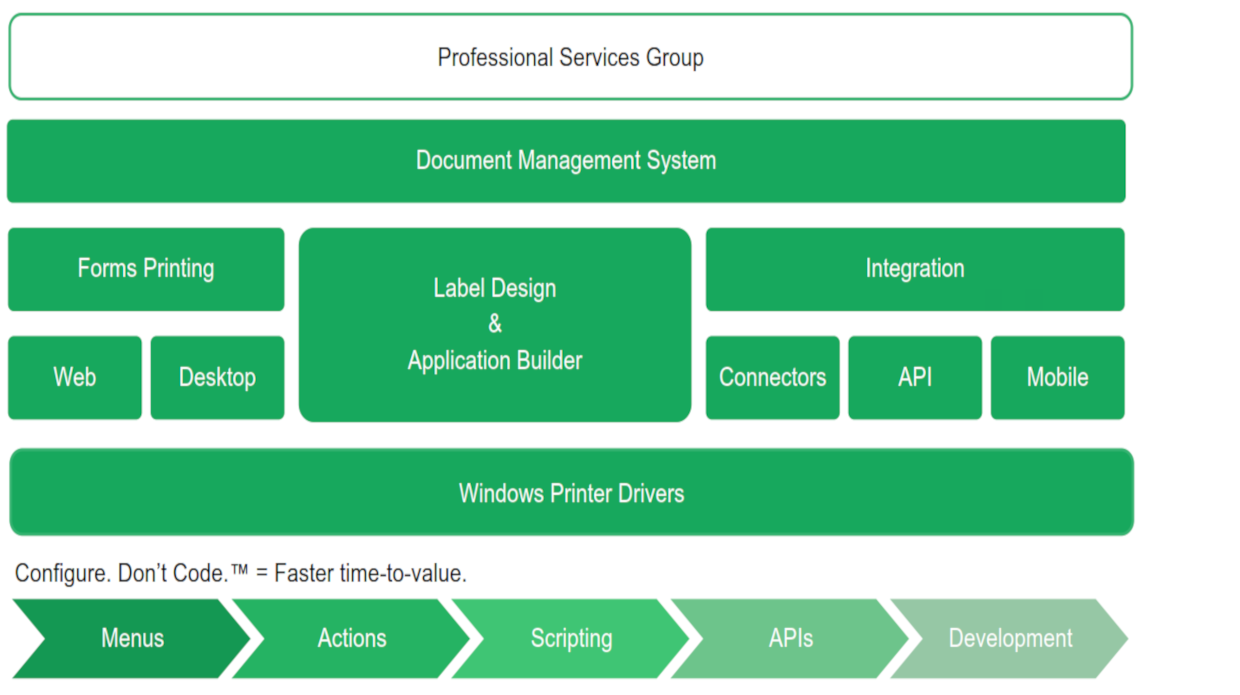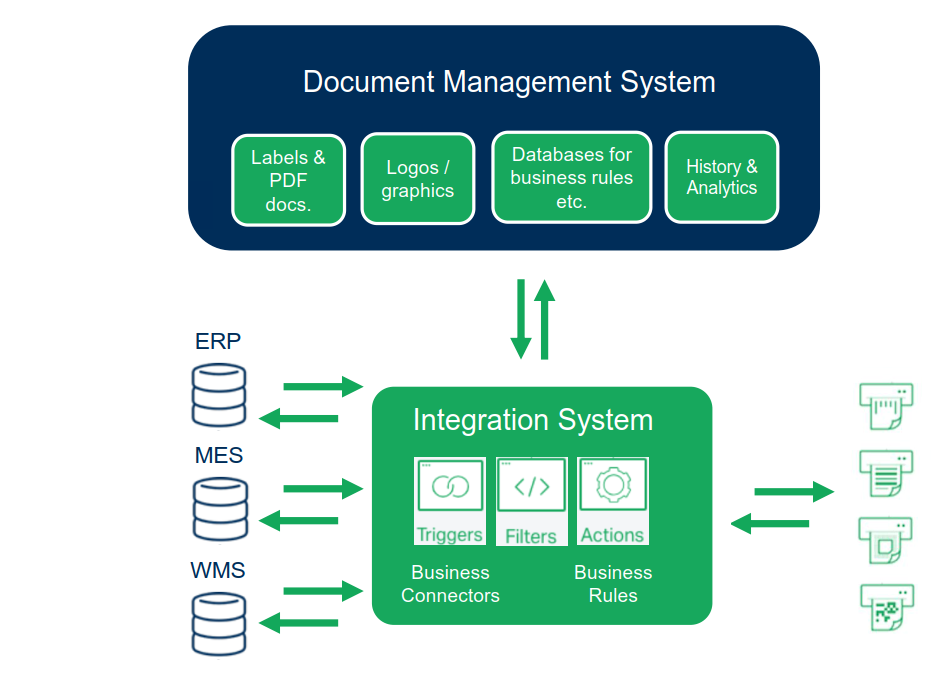
Configuring instead of programming
The LMS systems are available in Pro and Enterprise versions, where LMS Enterprise support system validation. When it comes to validation, it is important if it is a standard software or a customer specific solution. If the LMS is used at the minimum level, the validation templates are made for GAMP category 3 and makes the validation process much easier.
But even for customer specific installations with integration and PowerForms as GAMP 4 category, the validation templates helps to validate the standard parts of the software and minimize the work to validate the customized features with PowerForms development oder Cloud integrations.
LMS Architecture
In addition to required IIS and SQL Server components, usually there are additional connections to existing systems. The integration system can be used and can provide data from a different sources based on the specifications. For larger companies there is the option to set up load balancing and failover clusters.
An LMS installation offers small advantages in terms of integration options and printing, as the data does not have to be obtained or printed externally. This reduces the configuration effort in the area of data encryption during transfer and integration of local printers. When it comes to availability of on Premise LMS installation compared to the cloud solution, the LMS system does not offer real advantages.


LMS vs Cloud
When comparing LMS and Cloud, the performance characteristics are so similar that other reasons are important for a decision. The advantage of the LMS is that it does not manage data in external clouds, but requires significantly more effort in terms of IT infrastructure. A cloud solution with a basic installation could be setup within a few minutes compared to the LMS that require much more time and good preparation.
The term private cloud for an LMS installation matches the real world as administration, data management and printing is done via the browser. The installation require Internet Information Services IIS to make websites available to users. The data is usually stored on a SQL server, which must also be made available. As in many other areas like telephony or communication, a secure and high-performance internet connection is a prerequisite for the cloud solution.

For cloud solutions we work exclusively with our partner Loftware and their Loftware Cloud products. This belongs to the various cloud subscriptions and also the local Label Management Software products.

